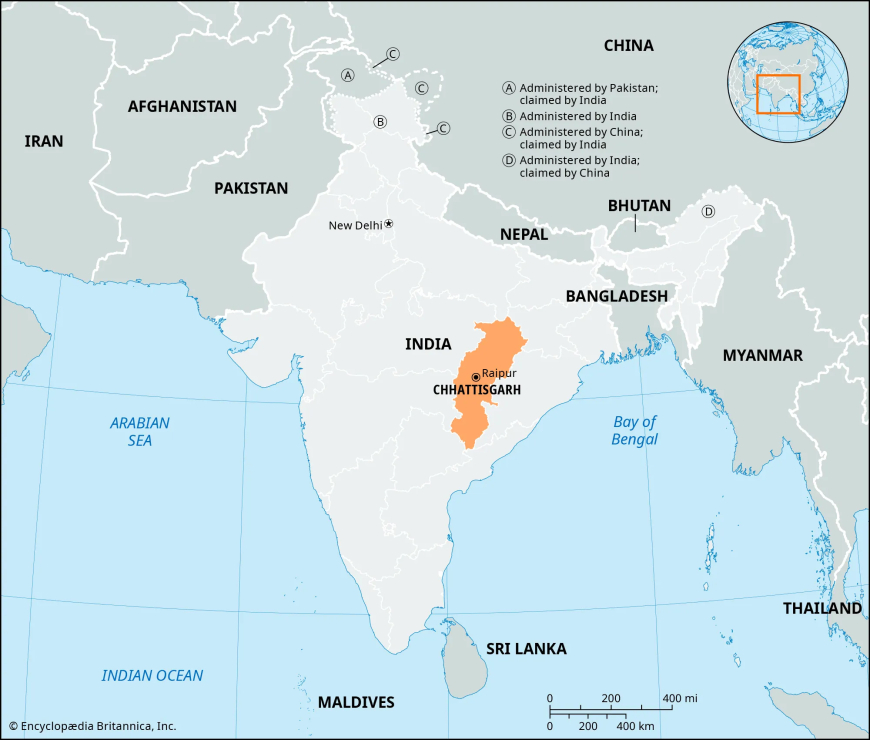New Statehood Flashpoint: Inside the Growing Demand for a Separate 'Dandakaranya' State
The demand for a separate Dandakaranya state is gaining ground across tribal regions in central and eastern India. Here's a detailed look at the socio-political factors behind this emerging statehood movement.

The simmering demand for a separate ‘Dandakaranya’ state has reignited political debates and social mobilization across parts of central and eastern India. Comprising tribal-dominated areas of Chhattisgarh, Odisha, Maharashtra, Andhra Pradesh, and Telangana, the proposed state is being championed as a long-overdue response to chronic underdevelopment, cultural marginalization, and administrative neglect.
Backed by tribal rights groups, social activists, and local political leaders, the demand for Dandakaranya reflects deep-rooted socio-political grievances that date back to India’s post-independence resettlement and internal displacement policies. This article explores the history, motivations, and growing momentum behind this emerging statehood movement.
What is Dandakaranya?
The name "Dandakaranya" has mythological roots, referring to the forest region mentioned in the Ramayana where Lord Rama spent part of his exile. In contemporary geopolitical terms, Dandakaranya covers parts of the Bastar region in Chhattisgarh, Koraput and Malkangiri in Odisha, Gadchiroli in Maharashtra, and adjoining forested areas of Telangana and Andhra Pradesh.
The area is home to a significant tribal population, including Gonds, Baigas, Koyas, and other Scheduled Tribes, who have historically faced displacement due to mining, large dams, and insurgency operations. According to data from the Ministry of Tribal Affairs, these districts lag behind national averages in literacy, healthcare access, and employment opportunities.
Why the Demand for a Separate State?
Supporters of a separate Dandakaranya state cite several reasons:
-
Underdevelopment and Neglect: The region suffers from poor infrastructure, limited healthcare, and weak educational systems. According to a report by PRS Legislative Research, many of these districts are among India’s most backward.
-
Lack of Representation: Tribal communities feel politically underrepresented and culturally marginalized in current state governments, which they say prioritize urban centers over forest regions.
-
Insurgency and Militarization: As one of the epicenters of left-wing extremism (LWE), the Dandakaranya belt has seen decades of conflict between Maoist insurgents and security forces, further destabilizing civilian governance.
-
Cultural Identity and Autonomy: Tribes in the region have distinct languages, traditions, and governance systems. Activists argue that statehood would allow for better preservation of indigenous heritage and more localized governance through Fifth Schedule provisions.
Political and Public Support
The movement has gained traction following rallies and resolutions passed by regional tribal councils and gram sabhas. Leaders from parties such as Gondwana Gantantra Party, Adivasi Mahasabha, and regional activists from Chhattisgarh and Odisha have begun openly advocating for Dandakaranya as India’s next state.
Professor Nand Kumar Sai, former chairperson of the National Commission for Scheduled Tribes (NCST), has said that “the time has come for an administrative rethinking of tribal regions. A state like Dandakaranya could address grievances that current state boundaries have failed to resolve.”
For a detailed overview of NCST’s stance on tribal governance, see ncst.nic.in.
Constitutional and Legal Dimensions
Creating a new state in India requires a constitutional amendment under Article 3, which empowers Parliament to alter state boundaries. However, the creation of Dandakaranya would involve redrawing boundaries across five states, making it politically and administratively complex.
Legal scholars at the Centre for Policy Research argue that while the demand is legally viable, it would require immense political consensus and strategic federal dialogue, especially given ongoing debates about other potential new states like Vidarbha and Gorkhaland.
Critics Weigh In: Fragmentation or Federalism?
Opposition to the idea has come from several quarters. State governments, particularly Chhattisgarh and Odisha, have resisted any move to divide their territories. Critics argue that further fragmentation could weaken administrative coherence and increase interstate resource conflicts, especially over minerals and forest rights.
However, supporters counter that federal restructuring is necessary in a diverse country like India, where one-size-fits-all governance models have often failed to address regional disparities.
Socioeconomic Stakes: A Region Rich in Resources but Poor in Outcomes
Ironically, the Dandakaranya belt is rich in bauxite, iron ore, and forest produce, yet remains among India’s poorest. Activists accuse large-scale industrial projects of displacing thousands without adequate compensation or rehabilitation.
A 2023 report from Down to Earth Magazine highlighted how mining leases in the region have increased land alienation and triggered ecological degradation—issues that a separate state could better manage with local input and tribal-led governance models.
A Potential Roadmap: Can Dandakaranya Become a Reality?
For the demand to gain national traction, activists say the following steps are essential:
-
Formation of a United Dandakaranya Coordination Committee
-
Tabling of a Private Member's Bill in Parliament
-
Tribal consensus across all proposed districts
-
Engagement with national parties and inclusion in election manifestos
-
Independent commissions or constitutional bodies to assess viability
Given the current government’s focus on tribal welfare—evident in recent policies like the PM JANMAN Yojana—observers believe there may be some political space to explore such a proposal, albeit cautiously.
Conclusion: A Demand Rooted in History and Hope
The call for a separate Dandakaranya state reflects not just a political aspiration, but a yearning for justice, dignity, and development among India’s most marginalized communities. As public discourse around decentralization and tribal empowerment grows, Dandakaranya might emerge as a serious conversation—not just a rhetorical demand.
Whether or not the movement succeeds, it has already forced a critical national conversation about the future of tribal governance, equitable development, and inclusive federalism in India.




















































